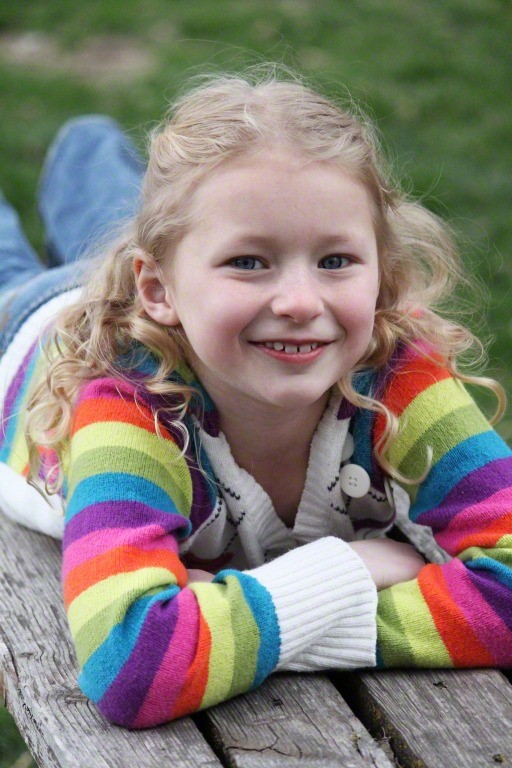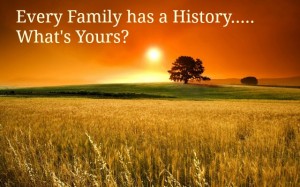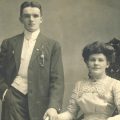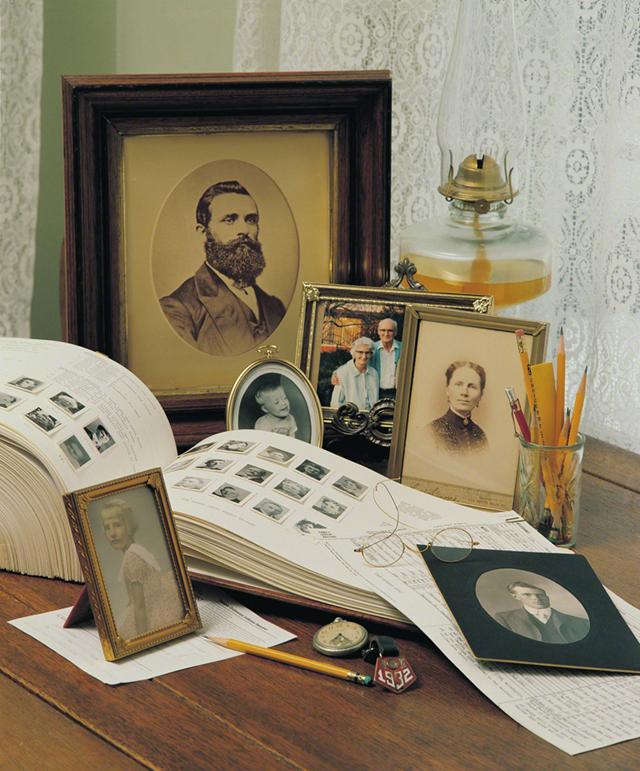When recording your life story, how you do it will be as unique as you are. Just as there are many ways to journal your life, there are many ways to write your personal history. Those who have never kept a journal or started keeping a journal later in life, like myself, might use it as a journal replacement for all or part of their lives. Others who have kept a journal all along might want to do a personal history to summarize their life as well as add things that are not included in their journals. To be effective with journal keeping, one needs to be recording events and feelings as they happen. Writing a personal history can allow the writer time to remember and reflect about life events with perhaps a different perspective.
Who is Your Audience?
 Journal writers often consider their intended audience when deciding what to include in their journal entries. Journals are sometimes kept as a type of therapy with no desire for anyone but the author to ever read the contents. Journals are often handed down to a person’s posterity with the intention to share the author’s life story. Personal histories are almost always created to share with future generations. A personal history just takes too much work and effort not to share it when it is finished. As you begin the process of creating your personal history, plan to take months or maybe even a year so that the finished project is all that you want it to be. Plan spending weeks or months reflecting on the past. To keep on track with a project this size you will need motivation. Rather than thinking you are doing this for your descendants in general, choose a specific person or persons from among your children or grandchildren for whom you are creating it. Get a picture of that person and keep it handy while you are working on your history. Ask yourself: what would your target person like to know about you? What can you include that would make your history especially relevant to them? Just because you are their parent or grandparent, your descendants are going to have an interest in your story but if you keep their interests in mind, it will be even more interesting.
Journal writers often consider their intended audience when deciding what to include in their journal entries. Journals are sometimes kept as a type of therapy with no desire for anyone but the author to ever read the contents. Journals are often handed down to a person’s posterity with the intention to share the author’s life story. Personal histories are almost always created to share with future generations. A personal history just takes too much work and effort not to share it when it is finished. As you begin the process of creating your personal history, plan to take months or maybe even a year so that the finished project is all that you want it to be. Plan spending weeks or months reflecting on the past. To keep on track with a project this size you will need motivation. Rather than thinking you are doing this for your descendants in general, choose a specific person or persons from among your children or grandchildren for whom you are creating it. Get a picture of that person and keep it handy while you are working on your history. Ask yourself: what would your target person like to know about you? What can you include that would make your history especially relevant to them? Just because you are their parent or grandparent, your descendants are going to have an interest in your story but if you keep their interests in mind, it will be even more interesting.
Create a Timeline
You may want to start your history by creating a time line. This will provide you with the opportunity to decide how much of your life that you will include. If your whole life seems like too much to tackle, choose a particular time like your childhood to chronicle. The next step would to be to divide your timeline into section. For instance, if you were going to focus on your childhood, the sections might include infancy, preschool, elementary school, middle school and high school. Use a big enough piece of paper to allow plenty of room in each section to jot down things that you will want to include in each section. Perhaps you might want to use a piece of paper for each section to insure you will have adequate room. The largest part of writing your story is to create a list of the people, places and events you want to include in each section and the photos and other mementos that relate to those people, places and events. Depending on what works as the best memory trigger for you, start with adding the people, places and events to the timeline or organizing the photo and mementos onto the timeline. If the photos you are organizing are in digital form, you will want to organize them on your computer hard drive. Begin by making a folder and labeling it “my personal history” or something similar. Then create subfolders for each of your timeline section and then organize your photos into the appropriate folder.
Collect Your Memories
I have been thinking about writing my personal history for some time. I find as I try to collect and recapture memories of my life, looking at old photos helps me remember details of the event that photo captured. I have found it helpful when I want to include an historical or cultural event in my history but don’t have related pictures, I use Google Image search to find appropriate pictures. In process of doing so, sometimes I learn things about the event that I didn’t know. For example, I grew up in very small town in a very hot, dry area of California. The town was, and still is, surrounded by miles and miles of hot, dry, empty nothing. As a result, we had some unique entertainment. First, the high school mascot is a horned toad (which is actually a lizard.) The big festival each year is The Horned Toad Derby during which there are horned toad races. In searching the internet for pictures of the horned toad races, I discovered that during the 1930’s Hollywood celebrities were present to bet on the horned toad races! I found that surprising since Hollywood is a several hour drive, even today.
 To collect your memories, you might find it helpful to carry along with you 3 by 5 index cards and as things come to your mind, jot down enough on an index card that you will remember the details of the event when you have the opportunity to write the full story. There are a number of books that have been written that include detailed lists of questions to prompt your memory including Legacy: a step-by-step guide to writing personal history by Linda Spence. An internet search will also help you find lists of questions that may help you remember things you want to include. Once you have found a list you like, you may want to cut it up into slips with a question on each slip and put the slips into a jar or small bag. Then when you want to spend some time getting memories recorded, take out a slip and answer that question. You should plan to brainstorm concerning all the sources that might help you with memory prompts. If you have done any journaling, that would be a good source. If you are an avid Facebook user, what you have posted there might be things you would want to include in your history as well. Did you know you can download all that you have posted to Facebook to your computer? Just go to Settings and below your list of General Account Settings is a link to download your Facebook data. Just follow the instructions and in a few minutes you will have what you have posted, liked, etc. in folders on your hard drive.
To collect your memories, you might find it helpful to carry along with you 3 by 5 index cards and as things come to your mind, jot down enough on an index card that you will remember the details of the event when you have the opportunity to write the full story. There are a number of books that have been written that include detailed lists of questions to prompt your memory including Legacy: a step-by-step guide to writing personal history by Linda Spence. An internet search will also help you find lists of questions that may help you remember things you want to include. Once you have found a list you like, you may want to cut it up into slips with a question on each slip and put the slips into a jar or small bag. Then when you want to spend some time getting memories recorded, take out a slip and answer that question. You should plan to brainstorm concerning all the sources that might help you with memory prompts. If you have done any journaling, that would be a good source. If you are an avid Facebook user, what you have posted there might be things you would want to include in your history as well. Did you know you can download all that you have posted to Facebook to your computer? Just go to Settings and below your list of General Account Settings is a link to download your Facebook data. Just follow the instructions and in a few minutes you will have what you have posted, liked, etc. in folders on your hard drive.
Recording and Preserving Your Memories
Once you have collected the stories and pictures you want to include, the next step is to decide how you want to record and preserve your story. There are a number of ways including scrapbooks with lots of writing between the photos, a word processing program in which pictures can be inserted between the words as well as electronic recording of audio and video. There are a number of web sites that will help you publish your history including Blurb.com, CreateSpace.com, lulu.com and InstantFlipBook.com. I have no personal experience with any of these or similar websites that may exist and can make no recommendations about choosing one or the other. The Instant Flip Book site puts your book into the form similar to the ads that retailers put online that you can digitally flip through. There are also websites including  LegacyStories.org that will help create narrated slide shows. Still pictures appear on the screen while your voice is heard talking about the pictures. Even if you do most of your recording in print form, you will want to record yourself electronically too. Just think how nice it would be to have recordings of your ancestor’s voice and give that gift to the special someone for whom you are recording your history. I am fortunate to have recordings of my father’s voice from radio commercials that he made while running for city council. I wish I had my mother’s voice recorded as well as my brother and grandparents who are all now deceased. The technology to record audio and video has become relatively inexpensive. If you don’t own the needed devices for recording your voice, I am confident that you know someone who does.
LegacyStories.org that will help create narrated slide shows. Still pictures appear on the screen while your voice is heard talking about the pictures. Even if you do most of your recording in print form, you will want to record yourself electronically too. Just think how nice it would be to have recordings of your ancestor’s voice and give that gift to the special someone for whom you are recording your history. I am fortunate to have recordings of my father’s voice from radio commercials that he made while running for city council. I wish I had my mother’s voice recorded as well as my brother and grandparents who are all now deceased. The technology to record audio and video has become relatively inexpensive. If you don’t own the needed devices for recording your voice, I am confident that you know someone who does.
If you would like to record your personal history but are a bit overwhelmed by the many steps it will require, there are people who are making a living helping others record and preserve their stories. One woman wrote her story, gathered her pictures and then hired a graphic design artist and an editor to help her make her history the polished work she wanted it to be. She has shared with me that she now wishes she had employed the editor after she had written just a few chapters because she learned from the editor and could have had later chapters in better shape before they went to the editor, which would have saved her some expense. A word of caution about having someone edit your work—don’t let them edit out your voice. Your story should sound like you told it. If you want someone to help you with each step of the process, you want to hire a personal historian. This person will begin by conducting extensive interviews with you to aid you in recording your story and then help you with the remainder of the process as well. There is an Association of Personal Historians which has a website with a tool to help find a personal historian to assist you. You might want to contact several of the personal historians and ask to meet with them and look over sample of histories that they have created for others.
What I have shared in this article is a brief overview of the process of creating and recording your personal history. There are plenty of books and internet resources available on the subject. I will end with links to a few of the resources available on the internet. This first link is to a lengthy article which has additional links with in it: https://familysearch.org/learn/wiki/en/Write_a_Personal_History
This next link is to great classes that were presented at the Roots Tech conference in February of 2014. Roots Tech brings together genealogists and the computer techies to work together to use technology for the advancement of family history. You will find many great classes available to view at this link. The two that relate most closely to creating your personal history are” How to Interview yourself for a Personal History” and “Sharing Your Family History with Multimedia”. Each of these presentations is a full hour long and contains lots of great ideas. https://rootstech.org/videos?lang=eng
I wish you great success is answering the question: What’s Your Story?
About Christine Bell
Christine Bell has been seeking her ancestor for almost forty years and continues to find joy in each one she finds. She volunteers in a Family Search Family History Center where she helps others find their ancestors. As a convert to The Church of Jesus Christ of Latter-Saints, she is grateful to be a member of the Church. She is a wife, mother of six grown children, grandmother of five going on six, and currently living in the western United States. Christine enjoys spending time with family and creating quilts for family, friends and Humanitarian Services of The Church of Jesus Christ of Latter-day Saints.







